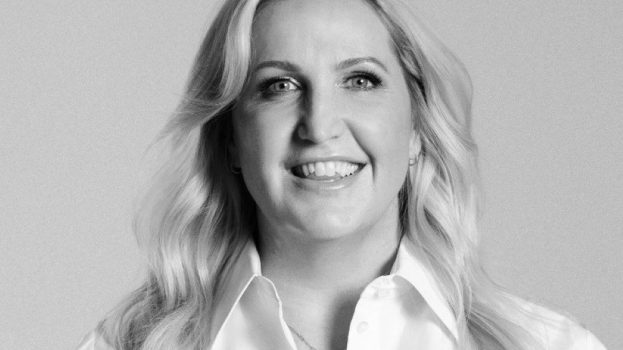Also in this report:
– Fashion retailers branch into cosmetics: Stores bet their well-known brand names will sell general lifestyle products p.20
– Debate continues on direct-to-consumer Rx ads p.24
– Spotlight onCold Remedies p.25
– Classic Rx gets direct mail effort p.26
– 1-800: is anyone listening? A prescription for effective pharmaceutical database marketing p.27
With consumer interest in preventive health care and ‘natural’ medications at an all-time high, it’s hardly surprising that the herbal remedy market is one of Canada’s fastest-growing over-the-counter categories.
For a company like Wampole Canada, which has been selling otc products since 1863, the decision to get into the herbal business was strictly a no-brainer.
But figuring out an acceptable way to inform consumers and pharmacists about these new products – well, that was a different story.
Federal government guidelines place tight restrictions on how herbal remedies can be marketed, explains Wampole president Aubrey Dan.
‘It’s very different compared to the pharmaceutical business,’ he says. ‘Most herbs are considered a food, which is good and bad for marketing the product.’
On the up side, there is no requirement for clinical studies prior to introducing a product.
‘You simply manufacture the product with the proper raw materials and launch it,’ explains Dan. ‘Your time frame to launch a new product could literally be weeks, as opposed to years [for some pharmaceutical products].’
And the down side?
‘Because herbs are considered food, you cannot make drug claims without applying for a din [drug information number] from the Health Protection Branch. That’s a long and difficult process, and any claim you do get to make is very limited.’
Still, whatever the challenges, the gains to be made by moving into the herbal market were simply too great for the company to overlook.
Once found only in health food stores, herbals have now moved into the mainstream, with a wide variety of both name-brand and store-brand products available on drugstore shelves across Canada.
The herbal category was worth an estimated $150 million in 1995, and was expected to grow by at least 20% last year.
Wampole entered the market in the spring of 1996, and by the end of the year had added 28 natural herbal supplements to its stable of Wampole brand vitamins, minerals and analgesics.
Dan says the move served to help in rebuilding Wampole, after the company changed hands.
In June 1995, owners Rhone-Poulenc Rorer sold Wampole to Novopharm, a Toronto-based generic prescription drug manufacturer. Novopharm also owns Stanley Pharmaceuticals, a private-label otc manufacturer.
Wampole’s herbal line hit the shelves in May, with 19 different products, including Echinacea Gingko Biloba, Saw Palmetto, Odourless Garlic, Red Korean Ginseng and Siberian Ginseng.
Introducing these new products to consumers was part of the mandate handed to Holmes Donin Alloul (now Holmes Prouk), the Toronto advertising agency hired by Wampole early last year.
There were three goals: to establish Wampole as a pharmacy brand name, to redesign the packaging for the company’s entire line of products and to launch the new line of herbals.
Creating the desired positioning for Wampole was a simple matter of developing a new brand campaign. Introducing the herbal products was a more complex challenge, given the limits on what can be said about their benefits.
The agency tried to overcome this particular stumbling block by creating brochures for distribution at point of purchase, along with a publication called The Wampole Family Guide to Nutritional Supplements.
This 50-page book consisted of material extracted from the Reader’s Digest Family Guide to Natural Medicine.
Wampole’s brochures and print ads listed a 1-800 number that consumers could call to get a copy of the guide, for a $5 shipping and handling fee. With the guide, they received $5 worth of coupons for savings on Wampole products.
The books are now also being sold for $5 at drugstores across the country.
‘We knew consumers were hungry for information on this product category,’ says Nick Matthews, managing director of Holmes Prouk. ‘We felt that if we could provide that information, we would be meeting a real need.’
Consumers aren’t the only ones looking for information on herbal supplements. Pharmacists, too, are consulted regularly by customers about these products, and need to be able to respond knowledgeably.
Wampole uses a monthy ad in the Canadian Pharmaceutical Journal, called the ‘Wampole Corner,’ to deal with frequently asked questions about herbals.
Dan says the company plans to take its partnership with pharmacists even further, with the unveiling of a new initiative later this year – an accredited correspondence training program on natural supplements.
Wampole’s consumer advertising campaign ran through summer and fall of 1996. Television was chosen as the primary medium, with support from magazine advertising.
Two 30-second and three 15-second tv spots were produced, along with three magazine ads. The same creative concepts were used in both media.
The ads were meant to underline the trustworthiness of the Wampole brand name. They depicted an assortment of bizarre folk remedies as a means of illustrating, by way of contrast, the virtues of Wampole products. This approach also helped link the brand in consumers’ minds to the concept of reliable alternative medicines.
The execution entitled ‘Folk Remedy #7 – The Headache,’ for example, featured a man with a toad on his head.
‘Perhaps it’s the thin air,’ it began, ‘yet in the Ozark mountains it’s believed that the best cure for a headache is to place a toad on your head. When the toad dies, miraculously, the headache will be gone.’ The ad went on to suggest that Wampole products might be a faster and more discreet means of dealing with the ailment.
The tag line: ‘Wampole. It’s good advice.’
Since launching its herbal medication line in May, the company has introduced a number of new natural supplements – most recently, Glucosamine Sulphate, widely touted as a remedy for the most common type of arthritis, osteoarthritis.
Wampole is the first company to bring this natural remedy to drugstores, and will soon be adding Glucosamine OA, a salt-free version made from glucosamine hydrocholoride.
In all, Dan says, approximately 35 new Wampole products are planned for 1997.























